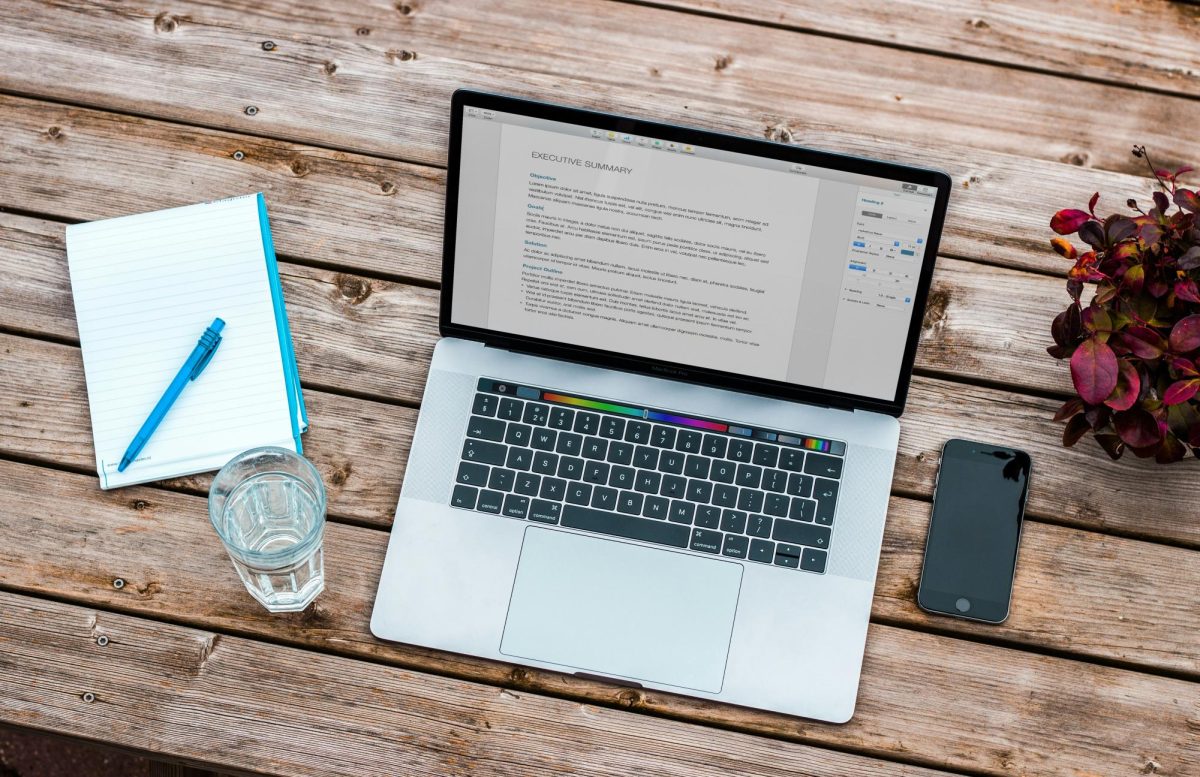Have you ever wondered how your classmates always seem to be ahead on their work, meanwhile when you get home you are instantly weighed down by the stress of the week? Falling behind is an understandable fear, which is why it is important to find your secret to productivity. Productivity essentially means being able to produce, whether as a chef in a kitchen or a student at school. So what is stopping you from “producing”?
89% of Stone Ridge students who responded to a survey named procrastination as the main obstacle to their productivity. If your classmate is ahead, they are not necessarily smarter or “better at school”, but they may have found an elusive secret to productivity. Although students struggle with similar problems, each student has their own solution that works for them. Some Stone Ridge student suggestions include shutting off your phone completely and putting it in an entirely different place, chewing gum for focus, getting plenty of sleep, and listening to podcasts, brown noise, and white noise. There are a variety of strategies out there, but what is important is finding one that works for you. Just because your friend next to you is listening to white noise to focus, doesn’t necessarily mean that white noise is going to be your secret too. You can find the key to being your most productive and organized self through understanding and experimenting with different strategies.
A root of many productivity issues is going for quantity of work rather than quality. Sustainable study strategies and efficient, precise work will win every time over long to-do lists. According to Ian Daley at the Harvard Business Review, the reason long to-do lists may feel good is “because of the dopamine hit you get from ‘checking’ another item off the list”. Making a to-do list can be helpful if you keep it concise and use those dopamine hits to motivate you to do harder tasks. Avoid long to-do lists which can cloud which items are more important and should be prioritized. Thus, lengthy, nonspecific lists of assignments do not contribute substantially to productivity or efficiency.
Similarly, many people confuse multitasking with productivity. This is not doing work for results but rather quick completion of easy assignments. Ilya Pozin, a lifestyle and technology writer for Forbes, states that “changing tasks more than 10 times a day drops your IQ an average of 10 points”. This means that prioritizing quantity over quality when completing assignments, though it may feel more productive, is actually harming your ability to yield substantial and beneficial results. Pozin also states that “only 20 percent of what you do each day produces 80 percent of your results”. Narrow down your to-do list to allow yourself to do less work with more impact.
It is important to understand what prioritizing looks like for you. One beneficial way to prioritize is to start with harder more daunting assignments before your brain gets tired. Save busy work and less involved assignments for when you do not have as much energy to give. Narrowing down your to-do list and focusing on specific assignments is only half the battle though. Another aspect of being productive is teaching yourself to proactively take control of your assignments and to-do list rather than waiting for assignments and emails to come to you. Basing priorities on when you see assignments in Canvas or emails in your inbox will cause you to lose control of your time. This can lead to confusion, disorganization, and missing assignments.
You must also take your mindset into account and how you are thinking about productivity. Often people confuse motivation and discipline, which drags them down as they are always searching for motivation to start work. But really who’s motivated to write an essay or answer questions for science? Waiting for motivation to come to you is the opposite of productivity. Instead, you must have discipline. Discipline is self-control, ordered time management, and self-regulation. Discipline can be something as simple as making yourself get off your phone, sit down, and study. While motivation is incentive, or drive, which shows itself more in random, sporadic, bursts of energy. Be active and honest with yourself and have discipline rather than waiting for motivation to come along.
The hard part is not identifying these issues but rather addressing them properly and finding effective solutions. If you know yourself and what you struggle with, the next step is to test suggestions and unlock your full productivity potential by finding what works for you.
Start by making a clear and concise list for the immediate time you will be working. Organize it based on what will produce impactful results and limit it to a few important tasks. Writing down tasks on paper instead of digitally will also help with remembering the tasks and make them feel more manageable than they do as distant ideas floating around in your head.
The next step to productivity is understanding yourself and what works best for your mind. Each and every one of us has an ultradian rhythm, knowing and following yours will help with productivity. As Ian Daley of the Harved Buisnees review defined it an ultradian rhythm is the “basic rest-activity cycle” that all of our bodies go through while we sleep. These 90-minute periods of moving through various sleep patterns also occur in the form of levels of alertness during the day. If you learn that you are always tired right when you get home, but have energy an hour after, schedule your hardest work for during that time. It is important to understand your body and its patterns to act when you are most alert and productive.
Hand in hand with ultradian rhythm, think of your time in waves. It is not an achievable goal to get home and work for hours straight. Instead, look ahead and divide up your time into chunks, with scheduled time for harder assignments, easier assignments, and breaks. It is important to acknowledge that right now is not always when you can get everything done. Once you know the patterns your mind and body go through it is valuable to set a constant routine for yourself.
It is useless to spend a significant amount of time each day trying to figure out your schedule because this dedicates more energy to scheduling than the actual work. Start by cutting out the parts of the day that distract you. If you notice that you always go on your phone when you get home, get into the routine of setting it in a different room as soon as you get home, even if it’s hard. If you sit down and start your homework as soon as you get home, that is what your brain and body will adjust to as the new normal and it will become easier over time.
As you employ these strategies to be more productive remember to give yourself breaks, because nonstop work does not mean productive work. For this reason, methods such as the Pomodoro Technique can help sustain energy and productivity while working. The Pomodoro Technique consists of 25-minute work periods followed by 5-minute breaks, with a 20-minute break after every four work periods. According to W. Patrick Bryan at the University of Arizona, “the goal is to get a small chunk of focused time” on a project which then allows you to “build on that momentum with consecutive chunks of time”. The Pomodoro Technique allows you to take breaks while still making impactful progress.
Another strategy for giving yourself breaks is to take advantage of the morning to start your day off right. This does not mean jumping right in, but rather taking that time for yourself. Check your email the night before school, not the morning of. Allow your school day to start when you step on campus or when classes start at 8 am. If you do not set these firm boundaries it will be difficult to distinguish between work time and personal time. A healthy balance between work and life will allow you to appreciate both aspects of your life without one feeling all-consuming.
As well, keep in mind that when you are taking your physical breaks from your work you also need to give your brain a quick rest. Although it is common to hear from those around us that our brains need a break, it is important to understand what that really means. According to a publication by Harvard Medical School the brain is fueled by glucose, which is the “primary source of energy for every cell in the body”. Your brain is the organ in your body that needs the most energy, so it is important to ensure your body has the energy to give. Many brain functions such as thinking, memory, and learning are tied to glucose levels and can be impaired when those levels are low. So, when you start to feel yourself getting tired, take it as a hint from your body that it’s time for a quick break. Something as simple as a short walk, grabbing a healthy snack, or meditating can help your brain reset and refresh.
At the end of the day, you know yourself better than anyone else, and if you are committed to putting in the effort and having discipline you can tackle the root of your productivity issues. Really examine yourself and your habits, and ask yourself what is holding you back and what helps you move forward. You will most likely know the answer to these questions, all that’s left to do is test solutions and see what works best for you.























